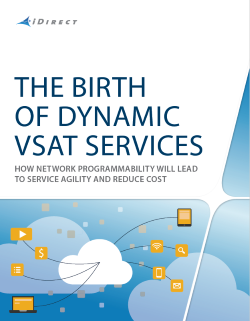An army of switchboard operators were once the indispensable force behind the United States telephone network, but this approach was ultimately unsustainable for future growth. Instead, the telecommunication industry embraced automation early in its history as a means to efficiently scale while improving service quality. Electromechanical switching relays proved enormous gains are possible when system-wide automation is employed.
Now the telecommunications industry is hoping network programmability will deliver similar efficiency gains. Communication networks have functioned largely the same since the 90’s, with rows of physical routers managed by teams of people, so they are prime candidates for system improvement. The goal is to reimagine how these networks operate by applying advanced system automation through Software Defined Networking (SDN) and Network Function Virtualization (NFV).

Although the concepts of SDN and NFV are relatively recent, they arose out of the larger trend toward virtualization. Data centers had discovered that if they “virtualized” software, multiple applications could share space on a single server. This led to the “cloud,” where automation made it possible to form a vast application processing pool shared across many servers. But while all the applications began converging into the cloud, the network itself was still tied to dedicated hardware devices.
People are now rewriting how networks should be architected, using SDN to centralize
routing control and NFV to virtualize network equipment. These concepts envision a world in which networks become embedded within the cloud. The goal is to make networks dynamically reconfigurable, so changes can happen within minutes rather than days or weeks. Essentially, the ability to offer dynamic services to customers.
Now that the telecommunications industry is steadily embracing network programmability and virtualization, what are the implications for satellite communications?
As SDN and NFV principles become more and more foundational, telecommunication companies will expect satellite communication to become part of this paradigm for easier integration. Satellite service providers will not only benefit from SDN and NFV, they will discover network programmability to be necessary to sustain future growth. This is a chance to deliver greater value, operating more like a Telco and becoming highly responsive to customers.
Fortunately, this transition doesn’t need to occur all at once and iDirect has the networking expertise to assist providers as they begin evaluating technology options. iDirect has written a special white paper to help satellite service providers gain a conceptual understanding about SDN and NFV, discover how this technology will be critical to future growth, and learn how companies can take the first steps forward toward adopting network programmability and virtualization.
Begin preparing for the SDN and NFV technology transition by downloading The Birth of Dynamic VSAT Services white paper.
